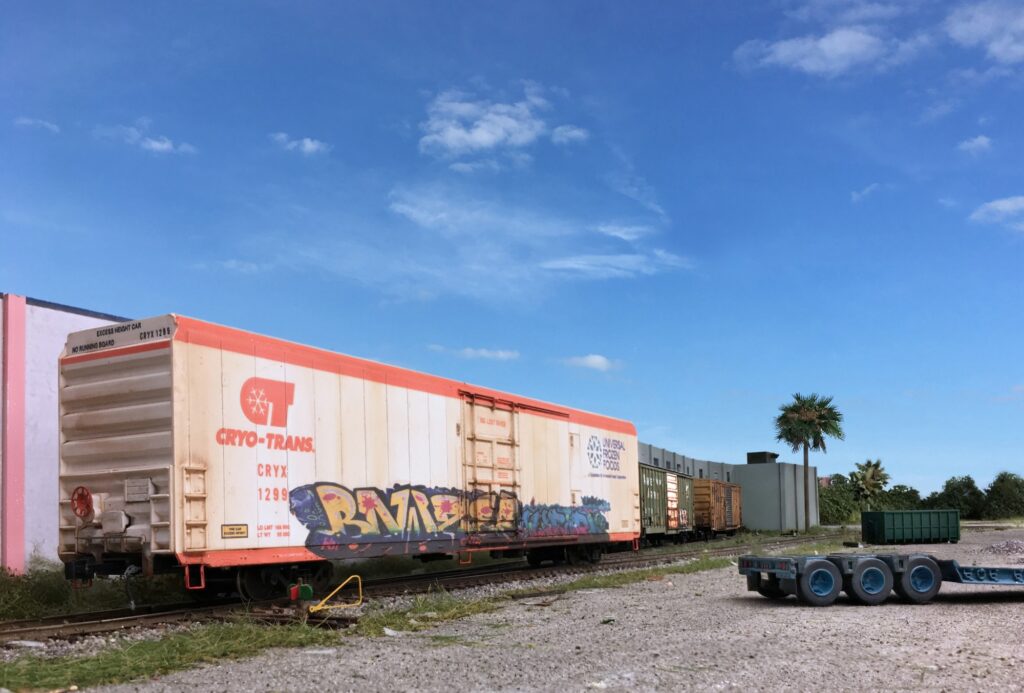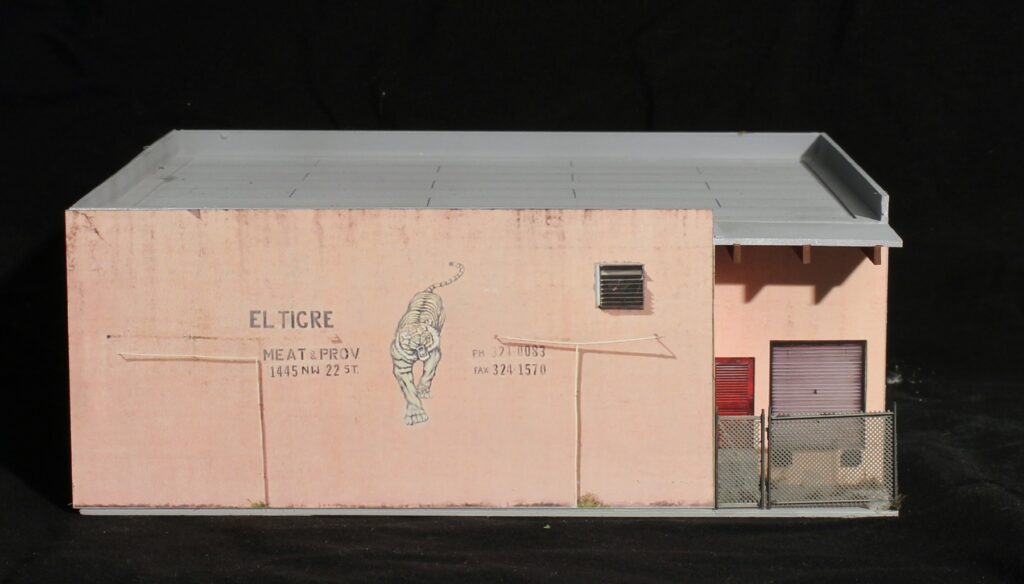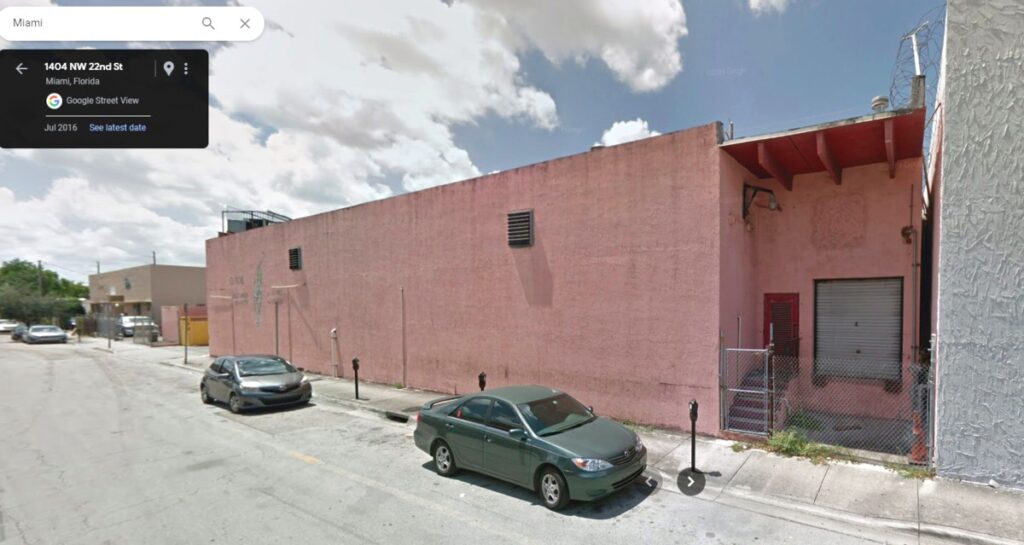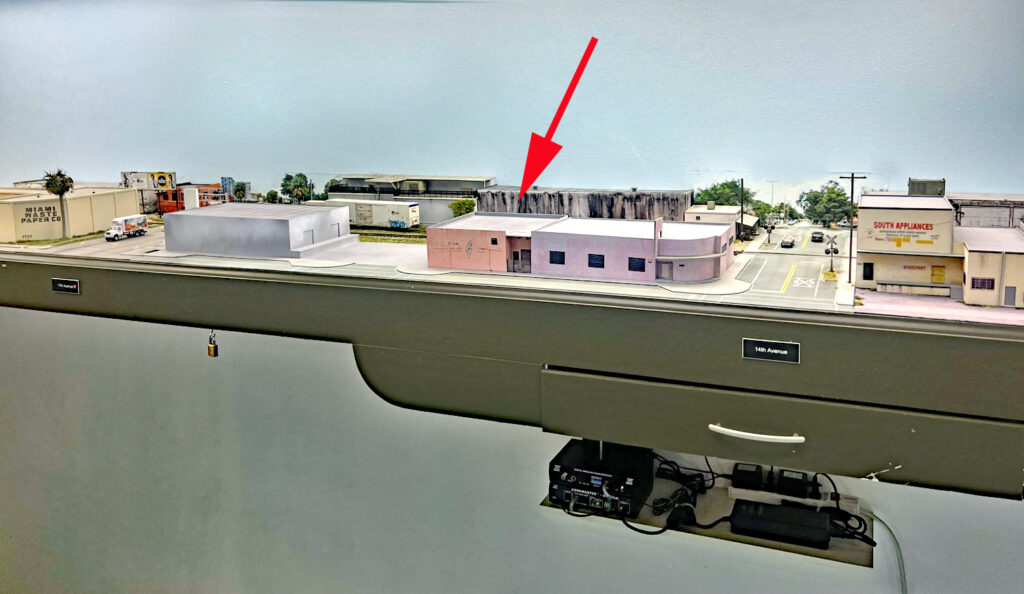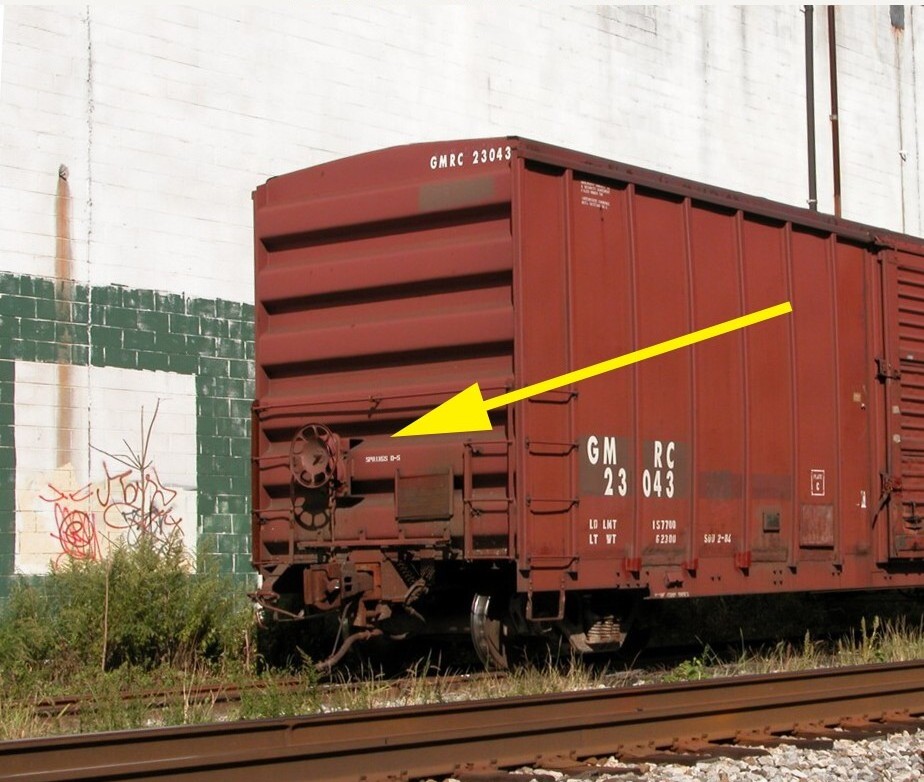The following is a guest blog, generously written by Tom Holley, a retired NS conductor. Thanks Tom!
I thought I might, if you don’t mind, walk you through a typical pick up of a car. I worked for Norfolk Southern, so the rules I use are the rules in effect when I worked. Other railroads’ rules may vary.
Let’s look at a switch engine with one car and a locomotive, going to an industry to pick up one car. We’re operating in the modern era, with an engineer and conductor only crew.
First, after arriving at the switch, the conductor will dismount and pull the engine and car by. If you cut the car off and leave it while you go get the MTY, you’ll have to tie it down and do a securement test. The conductor lines the switch and derail, and ensures the industry blue flag is down. He then tell the engineer that the switch is lined and the derail is off. The engineer will ask for a double check, and the conductor will reply “Double checked.”
The job will then shove down and stop one car length from the coupling. On NS, a conductor can’t ride to a coupling except on a locomotive.This allows the conductor to get down, and perform an inspection on the car. Before you couple to a car, you want to inspect the car for a number of things: are all hoses disconnected, are all ramps out of boxcar doors, are all wheel chocks removed, and are all people clear. Is the car on the rail? The car did not hit and damage a bumping post, did it? You check these things first, before coupling to the car, for two reasons: First of all, safety; are the car and surrounding area clear to enable moving the car? Secondly, to protect your job. It the car is derailed, damaged, shoved off the end of a track, or still hooked up, and you couple to it, it becomes your responsibility, whether you did the damage or not. Also, if you need to adjust a drawhead to ensure the coupling lines up, you have the required fifty feet between cars to do so.
If it’s safe to couple, couple up. Then stretch the car; do not release the handbrake until you’re sure it’s a good couple. (note from Lance. I was incorrect in my video explanation of this earlier) The point of a stretch is make sure the car is coupled. If it’s not, and you release the hand brake, the car might roll off. If it’s a good couple, get three step (or red zone) protection, and cut the air in and knock off the brake. Then pull the car out, and line the switch and derail back. Tell the engineer they are lined, and give him his double check.
Now that everything is together and locked up, if you do an air test do it now. After that, get on the engine and leave. Now, there are as many ways to switch as there are railroaders. But when you are a conductor, and on the ground by yourself, the little things add up. Every switch lined, every hand brake tied, and all the walking done is up to you. So make it easy on yourself. My father, with 48 years of engineer experience gave me some of the best advice I ever got, “When you get tired of walking, then you’ll start thinking.”
Just some observations from an old retiree.
Regards,
Tom Holley
